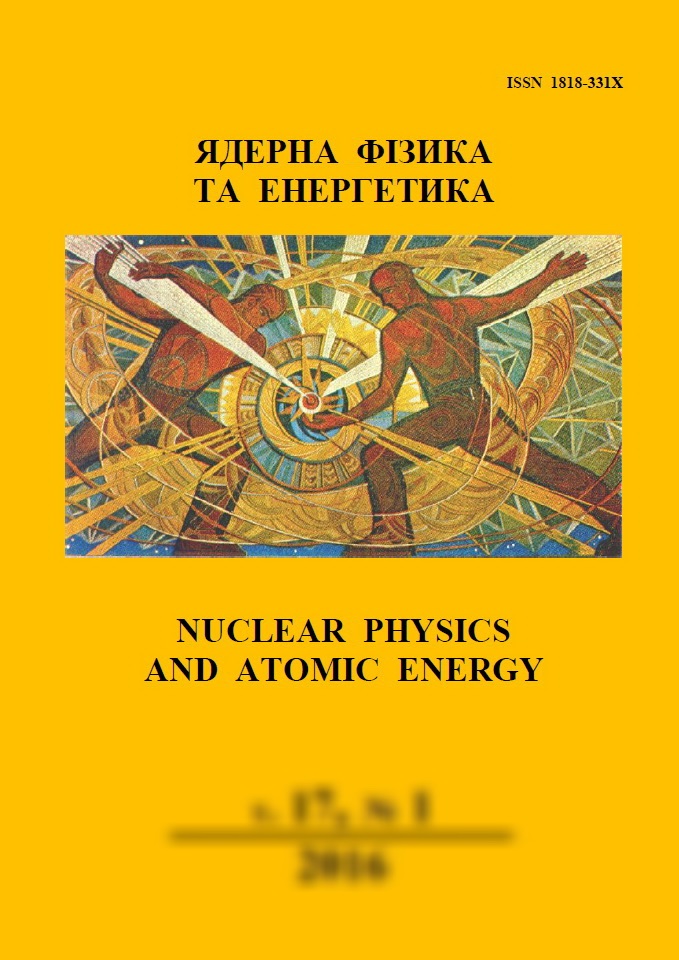 |
Ядерна фізика та енергетика
Nuclear Physics and Atomic Energy
ISSN:
1818-331X (Print), 2074-0565 (Online)
Publisher:
Institute for Nuclear Research of the National Academy of Sciences of Ukraine
Languages:
Ukrainian, English
Periodicity:
4 times per year
Open access peer reviewed journal
|
Nucl. Phys. At. Energy 2009, volume 10, issue 2, pages 214-219.
Section: Engineering and Methods of Experiment.
Received: 09.06.2008; Published online: 30.06.2009.
 Full text (en)
Full text (en)
https://doi.org/10.15407/jnpae2009.02.214
Digital signal processing application in nuclear spectroscopy
O. V. Zeynalova1, Sh. S. Zeynalov1,2, F.-J. Hambsch2, S. Oberstedt2
1Joint Institute for Nuclear Research, Dubna, Moscow region, Russia
2EC-JRC-Institute for Reference Materials and Measurements, Geel, Belgium
Abstract:
Digital signal processing algorithms for nuclear particle spectroscopy are described along with a digital pile-up
elimination method applicable to equidistantly sampled detector signals pre-processed by a charge-sensitive
preamplifier. The signal processing algorithms provided as recursive one- or multi-step procedures which can be easily
programmed using modern computer programming languages. The influence of the number of bits of the sampling
analogue-to-digital converter to the final signal-to-noise ratio of the spectrometer considered. Algorithms for a digital
shaping-filter amplifier, for a digital pile-up elimination scheme and for ballistic deficit correction were investigated
using a high purity germanium detector. The pile-up elimination method was originally developed for fission fragment
spectroscopy using a Frisch-grid back-to-back double ionisation chamber and was mainly intended for pile-up
elimination in case of high alpha-radioactivity of the fissile target. The developed pile-up elimination method affects
only the electronic noise generated by the preamplifier. Therefore, the influence of the pile-up elimination scheme on
the final resolution of the spectrometer investigated in terms of the distance between piled-up pulses. The efficiency of
developed algorithms compared with other signal processing schemes published in literature.
Keywords:
x- and gamma-ray spectroscopy, computer data analysis, ionization chambers, interpolation; curve
fitting, numerical differentiation and integration, integral and integrodifferential equations.
References:
1. Georgiev A., Gast W. IEEE Trans. Nucl. Science 40 (1993) 773.
https://doi.org/10.1109/23.256659
2. Pullia A. et al. Nucl. Instr. and Meth. A 439 (2000) 378.
https://doi.org/10.1016/S0168-9002(99)00897-9
3. Bardelli L. et al. Nucl. Instr. and Meth. A 560 (2006) 517.
https://doi.org/10.1016/j.nima.2005.12.249
4. Kihm T. et al. Nucl. Instr. and Meth. A 498 (2003) 334.
https://doi.org/10.1016/S0168-9002(02)02118-6
5. Kalinin A. I. et al. Nucl. Instr. and Meth. A 538 (2005) 718.
https://doi.org/10.1016/j.nima.2004.08.126
6. TekVisa Connectivity Software. V3.0.2 build 33.
www.tektronix.com
7. Max J. Méthodes et techniques de traitement du signal
et applications aux mesures physiques (Troisième
Edition, MASSON, 1981).
8. Radeka V. IEEE Trans. Nucl. Science 15 (1968) 455.
https://doi.org/10.1109/TNS.1968.4324970
9. Khriachkov V. A. et al. Nucl. Instr. and Meth. A 444 (2000) 614.
https://doi.org/10.1016/S0168-9002(99)01168-7
